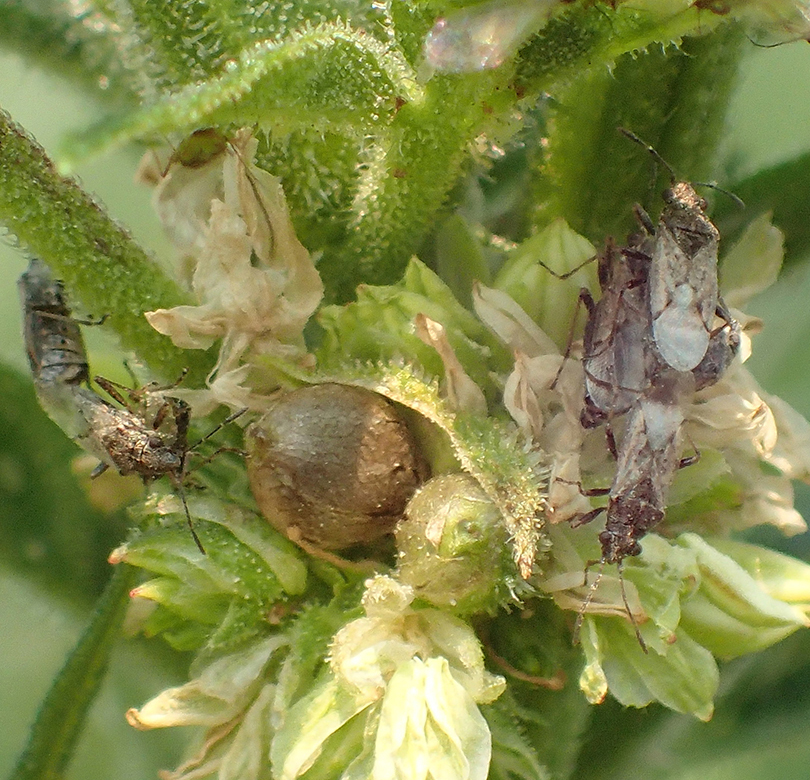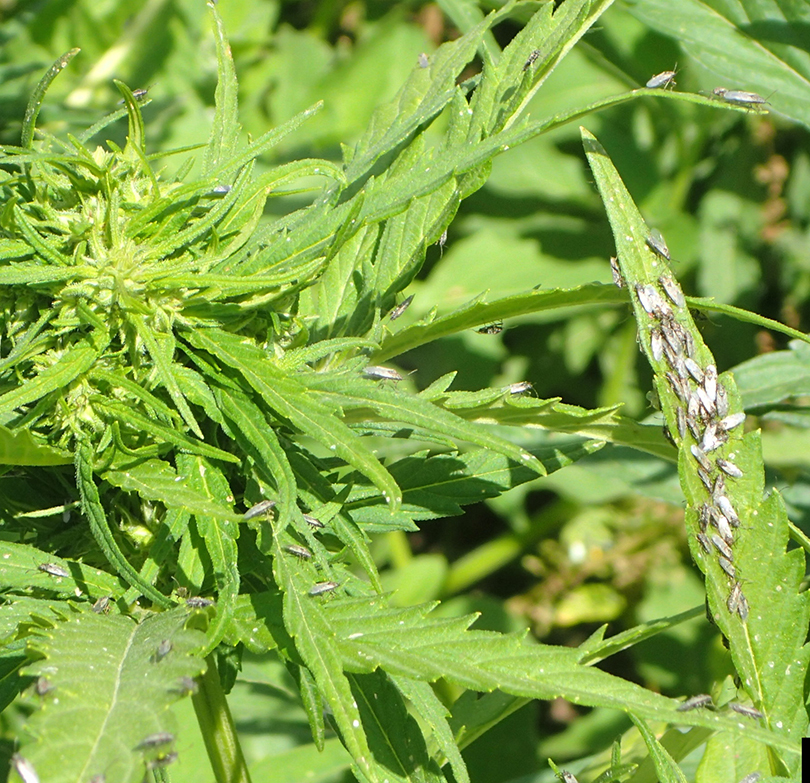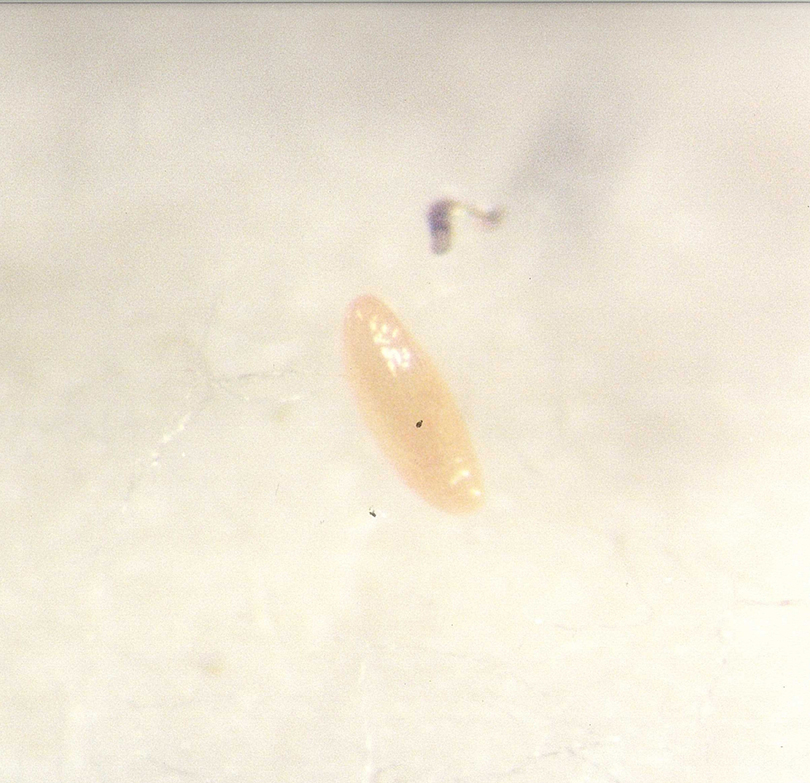False Chinch Bug
Nysius raphanus
Hosts
- Field-grown hemp (primarily for seed)
- Brassicas
- Leafy greens
- Potato
- Root crops
- A variety of weeds (kochia, mustards, pigweed, Russian thistle, sagebrush, etc.)
Description
On adults, the head, thorax, and anterior portion of the wings are brownish gray and the posterior portion of the wings are whitish-clear. Nymphs are mottled gray-brown with red to orange markings on the abdomen.
Life Cycle
Egg | Nymph | Adult
- About 3 generations per year.
- Overwinter as nymphs and adults under debris near mustards.
- Adults lay eggs around host plants in soil cracks.
- False chinch bugs migrate from host plants (mustards, etc.) when they dry out, are sprayed with herbicide, or if they are cut. Large migrations of false
chinch bugs into a hemp field could coincide with these events.
Damaging Lifestage(s): Nymph, Adult
Damage Symptoms
Adults and nymphs feed with piercing-sucking mouthparts. Large numbers of aggregating adults on young plants can cause plants to wilt and die rapidly. Outbreaks that destroy plantings usually occur early in the year. On hemp grown for seed, aggregations of adults may occur on the developing seed heads.
Time for Concern
July through August.
When and Where to Scout
- Scout field edges that may contain mustards starting in early spring.
- Look for aggregations on individual plants in July and August.
- Adults and nymphs are most active during cooler mornings or late evenings.
Threat Level
Medium. In hemp, false chinch bug feeding does not seem to be very destructive when populations are low but can cause serious damage when high in numbers. Typical false chinch bug damage in hemp has minimal effect on yield. Spot infestations are sporadic due to their highly migratory behavior, but can cause wilting and plant death, especially on smaller plants.
Occurrence in Utah
On occasion, chinch bugs have invaded new field plantings due to dried weeds in adjacent fields. No economic damage has been reported.
Management
- Low numbers do not need to be managed.
- Row covers on crops near uncultivated areas of mustard family plants.
- Keep plants well irrigated.
When to Consider Treatment
If economically damaging infestations are present.
Look-alikes
Chinch bug, lygus bug, and other seed and plant bugs; big-eyed bug (beneficial).
Photo Credits
- Egg - HortNET, The Horticulture and Food Research Institute of New Zealand, Bugwood.org
- All others - Whitney Cranshaw, Colorado State University, Bugwood.org






